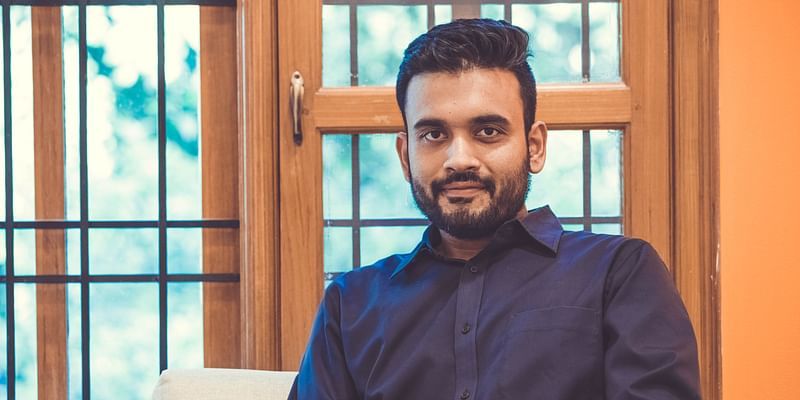The coronavirus pandemic has affected many Indian startups, forcing them to announce salary cuts and laying off employees.
Health and fitness startup Curefit was also in the news recently for downsizing its operations, which resulted in laying off gym trainers in Tier-II markets and Delhi in India, and in the United Arab Emirates (UAE).
Founded by former Flipkart executives Mukesh Bansal and Ankit Nagori in 2016, the Bengaluru-based startup was in its hockey stick growth trajectory, until the coronavirus pandemic affected its operations.
In a recent conversation with Shradha Sharma, Founder and CEO, YourStory, Ankit had said: “Unlike any of the startups out there, Cult has had zero revenue in the past few months. We also believe that unfortunately, gyms will be the last to come back to life.”

Ankit Nagori, Co-founder Curefit
However, by the end of May, the team started monetising its digital classes. After an initial 14-day free trial, the startup said new customers will be given access to limited videos for free, while the rest will be charged. They were also given the option to choose between three-month, six-month, and 12-month packages.
The startup is also gearing up to conquer the market with the easing of lockdown restrictions and life slowly returning to normalcy.
In an exclusive interview with YourStory, Ankit explains the steps they are taking to fight the pandemic, and also talks about their plans for the next few months.
Edited excerpts from the interview:
YourStory (YS): How do you see the scenario change for Eatfit and Curefit in the next few months?
Ankit Nagori (AN): Before the lockdown, Eatfit had close to 50,000 deliveries per day in a month. Post lockdown, there was a 20 percent dip in volumes. Now, we are again seeing 30 to 35 percent of pre-COVID volumes.
We will see a steep jump in orders once offices open. Before the pandemic, 55 percent of our orders would come from offices. We expect to see a 50 to 80 percent jump in volumes soon.
We are not focussed on expanding, and have even shut operations in smaller cities. We will continue to focus on expanding our existing networks and work deeper in Delhi-NCR, Bengaluru, Hyderabad, Mumbai, Pune, and Chennai.
YS: What steps is Eatfit taking to ensure safety and to attract more customers?
AN: We are working to bring back our customer’s trust in the food delivery space. We have also launched a ‘Safest Kitchen in Town’ campaign.
All our kitchens are heavily mechanised, and so the human contact is limited. We also have face masks, shields, and gloves that have been developed with the right ergonomics in mind.
All the raw material that comes in, whether it is food or packaging material, is being treated. The food is prepared in temperature-controlled kitchens at 150 degrees, which is good enough to kill bacteria and viruses, thus significantly reducing the risk of virus transmission.
The kitchens are well sanitised, and the body temperature of the delivery staff is checked before they go out to deliver food. We are also following social distancing and contactless delivery.
The kitchen staff coming from outstation are kept on a 14 days quarantine, and if anyone shows any symptoms, they are immediately quarantined. We are ensuring they are paid regularly.
According to our survey, 40 to 50 percent of our consumer base is getting back to their normal schedule, and the time available for cooking will go down.
We have also launched an immunity booster and superfood range. There is also a large recipe segment on the app, and the recipe consumption in the first week of May was the highest, with 150,000 people looking at the recipe, which is now down by 15 to 20 percent.
YS: What shift in the market and consumer behaviour are you predicting in the next few months?
AN: Talking about food delivery platforms, the smaller mom-and-pop restaurants are badly hit, and they may never recover. Offline chains had a small fraction of their business online, and now that is likely to shift online. Earlier, if 25 to 30 percent of their sales were coming from online, we see that increasing to 50 percent.
A lot of restaurants will shut down their dine-in business and will focus more on takeaway and online business. People will start focussing on branded chains even if you are ordering from Zomato and Swiggy, as they have facilities in place to check live temperatures and maintain safety standards. You will also be able to see the temperature log of all the people inside the kitchen.
Eating out will become less frequent in the next 12 to 18 months, and ordering in will become the new norm.
I see the growth of cloud kitchens. Similar to when Amazon and Flipkart opened up their marketplaces, which led to the creation of indigenous brands. I see that in terms of speciality foods, and it will be enabled by cloud infrastructure companies.
YS: What change do you see specifically for Eatfit?
AN: The consumer demand will not see a V recovery curve but a U curve. We might see the ready-to-eat and cook segment grow. We are building a range of best-selling foods like dals, paneer, and parathas that will be in the ready-to-eat segment, which will be releasing in a couple of weeks. We don’t believe meal kits will grow.
YS: What are the changes we can expect in Cultfit?
AN: Close to 60 percent of our overall revenue was contributed by Cult, which dropped with the lockdown.
With Cult, we see a V curve recovery with the opening of gyms according to when the government mandates it.
The SOPs, guidelines, and technology are ready for an extremely safe environment. The centres will have half the people and limited equipment, more body weight training, and working out in their own squares.
The digital business has already given us $1 million in revenue. We will reach pre-Covid numbers by early 2021, and with this range of digital business, we see a 20 to 25 percent additional revenue. In the next five years, we are likely to see the offline and online business contribute 50 percent each.
Even in the gym segment, the smaller boutique gyms are being hit.
Additionally, we launched a platform called Gymfit before the COVID-19 lockdown. It is focussed on establishing a platform of highly-curated gyms, and we will provide them with the needed support.
(Edited by Megha Reddy)
Want to make your startup journey smooth? YS Education brings a comprehensive Funding and Startup Course. Learn from India's top investors and entrepreneurs. Click here to know more.
Link : https://yourstory.com/2020/06/curefit-eatfit-ankit-nagori-covid-19-mukesh-bansal-unicorn
Author :- Sindhu Kashyaap ( )
June 12, 2020 at 06:05AM
YourStory


